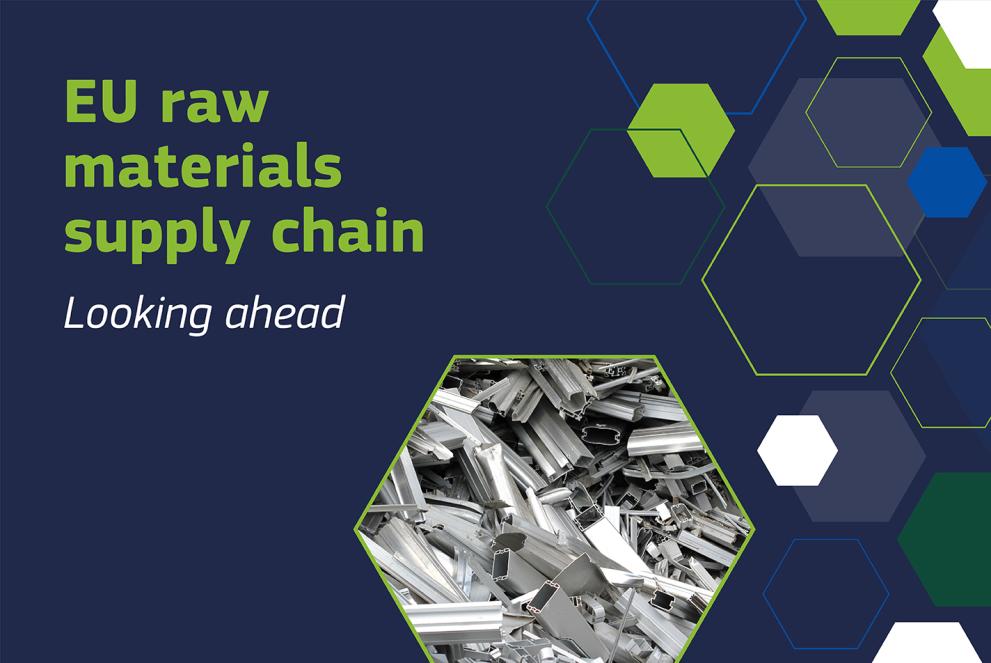
Weaning our economy off fossil fuels and switching to a green and digital future is a metal and mineral-intensive undertaking, which involves an unprecedented increase in demand for the materials key to it. For example, the EU’s need for lithium-ion batteries to power our electric cars and for energy storage purposes is expected to shoot up 21-fold by 2050 in a high-demand scenario. Similarly, for wind turbines, EU demand for rare earth metals will increase 4.5 times by 2030 and 5.5 times by 2050, according to the estimates in the JRC’s new foresight study “Supply chain analysis and material demand forecast in strategic technologies and sectors in the EU”.
The foresight study provided the scientific evidence that underpins the Critical Raw Materials Act, published today. The insights in it also contributed to the establishment of the concept and the list of strategic raw materials in the Act.
Whereas a critical raw material is characterised by a high risk of supply disruption and its importance for the overall EU economy, a strategic raw material is additionally defined by its importance for strategic areas, its projected demand growth relative to current supply, and the difficulties of scaling up production.
Supply chain dependencies
The foresight report analysed the complete value chains for 15 key technologies across the five strategic sectors responsible for the delivery of the green and digital transitions, and the EU’s defence and space agenda. It provides a forward-looking basis for helping to identify strategic raw materials for key technologies and applications, identify bottlenecks and pinpoint the segments of supply chains that need strengthening.
The report found that China, in particular, controls many stages of such strategic technology supply chains, not least that of raw material extraction and processing. In all of the technologies analysed in the report, there is a huge dependency on imports from China, at various stages of the value chain, ranging from raw materials only (in the case of electrolysers), to raw and processed materials along with components (for example wind turbines and magnets for electric motors) and in some cases, the complete value chain (solar photovoltaics).
The EU is currently at the forefront of the electrolyser industry (which produces hydrogen), is a leader in heat pump technology, and has the largest share in the robotics market for civil exoskeletons. However, the EU is losing global leadership in some of the technologies analysed. For example, since the previous foresight report in 2020, the EU’s share in global wind turbine production has declined from 58% to 34%, while China’s share increased from 23% to 52%.
The fragility of global supply chains and the risks of increased dependence on third countries were made very clear during the COVID-19 pandemic and Russia’s aggression against Ukraine. The EU addressed its dependence on Russian oil and gas by accelerating its energy transition and setting ambitious targets for the deployment of renewable technologies set out in the REPowerEU plan. However, with the expected high demand for such technologies, the EU could risk exchanging one dependency for another, unless it takes action.
Possible measures to strengthen supply chains
The Commission’s Critical Raw Materials Act proposes targeted policy measures to ensure access to the necessary strategic materials and more secure and resilient supply chains. These measures include international partnerships for the diversification of supply, the development of domestic production and processing capacities, recycling and resource efficiency, substitution and innovation, and behavioural changes.
Circularity can play an important role in maintaining secure access to strategic materials in the EU. Contrary to the fossil fuel economy, in which materials are burned, metals and minerals central to the green technologies of the future can often be recovered and recycled. There is considerable potential for improvement in this field, and technological improvements are ongoing. Today, the rare earth elements in end-of-life vehicles are not recycled at all and are usually lost in base metal fractions, according to an upcoming JRC study. Rare earths in existing iron ore streams currently go to waste.
Setting realistic targets for increasing domestic EU sourcing and diversifying supply chains, for example through trade and investment agreements, should also play a greater role. However, in many cases, alternatives for diversifying supply from like-minded and reliable countries may not exist, due to geographical, economic and geopolitical restrictions.
Finally, research and innovation in the area of substitution (with advanced materials for example) are of paramount importance for both the EU’s autonomy and its global leadership.
Knowledge and Monitoring
It is essential for the EU to closely monitor the supply chains of strategic and critical materials, with risk management tools to help identify and manage potential disruption risks.
In this respect, the newly-revamped Raw Materials Information System (RMIS) is a useful tool as it provides knowledge on raw materials, both primary (extracted/harvested) as well as secondary (from recycling, for example). It provides information on specific materials, countries, as well as for different sectors and technologies. This includes analyses for both supply as well as demand, current and future.
Knowledge comes from a variety of sources within the JRC, from other European Commission services, from Horizon projects, and many other bodies of EU Member States and organisations (for example EIT-RM, Eurogeosurveys). Interactions are expected to be intensified in support of the Critical Raw Materials Act.
Increasingly, in support of the EU Raw Materials Partnerships, the RMIS is providing information – and interacting with – non-EU countries. For example, the RMIS now includes a series of country profiles for Africa and extensive data on trade.
Details
- Publication date
- 16 March 2023
- Author
- Joint Research Centre




